In the absence of any standard or widely accepted taxonomy for midget submarines and Swimmer Delivery vehicles (SDVs) I am free to construct my own. Or rather, I have to in order to share what I have learned on the subject. This article describes some of the terminology used when discussing SDVs and similar craft. Inevitably this barely scrapes the surface of the topic, and the reader is reminded that rules are proven by their exceptions.
The term SDV started to be used in the mid-1960s in the US Navy and quickly spread to certain allied forces such as the British SBS. Before then the USN called them Swimmer Propulsion Unit (SPU) but the new acronym emphasized a shift in capabilities away from merely swimming a bit faster to a means of transporting a team from A to B. The difference is subtle and reflects the maturing operational priorities rather than an advancement in technology. At the time ‘SDV’ specifically applied to American and British projects but in the years since it has grown to be a catch-all term for any underwater craft used by special forces to get closer to the target than can be achieved with a full size submarine. In the meantime the USN re-wrote the acronym to stand for SEAL Delivery Vehicle; it's the same damn thing.
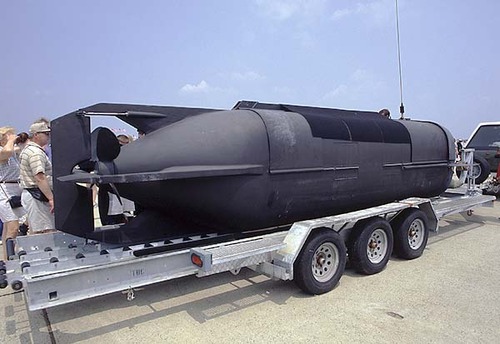
USN SEALs SDV Mk.8, the prototypical SDV
The term SPU was never widely appreciated outside the US Navy. Even in the States people talked in terms of Human Torpedoes and Chariots. The first modern special forces submarines appeared in WW1 and the pioneers on the world stage were undoubtedly the Italians. Consequently the English term ‘Human Torpedo’ originated in WW2 as a begrudging description of a threatening enemy craft where the crew sat astride (or in) a torpedo based craft. The Italians themselves called them ‘maiale’ which means ‘pig’ in reference to the difficulties involved in operating them. Imitation is the greatest compliment and so in the desperate days of 1942 the British set about replicating the Italian sneak craft. The British were masters of using seemingly irrelevant code names for secret projects but in this case they somehow came up with the fitting label ‘Chariot’. The term matched and subsequently became a generic term for any underwater craft used by frogmen, but particularly where the crew sit in tandem one behind the other. In the post-war years some Italian craft were even called chariots for export purposes although 'maiale' remained the name of choice for those in the know.
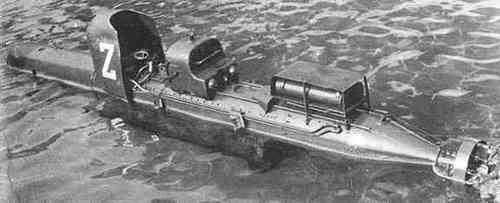
Italian SLC ‘Maiale’, the original Human Torpedo
Another British term which curried favor after the war was ‘X-Craft’, originally the secret midget submarine developed to sink the Tirpitz. In common usage a midget submarine is any sub that is purposely designed to be small. Another distinction is that they are generally dry on the inside, unlike Chariots were the crew are exposed to the ocean and have to use breathing apparatus. This is the difference between a ‘dry sub’ and a ‘wet sub’. After the war the equivalent term ‘Minisub’ was coined and is used interchangeably. Unlike several other British types from this time the X-Craft was never a copy of Italian craft although similar midget submarines were of course developed in the previous world war by, you have guessed it; the Italians.
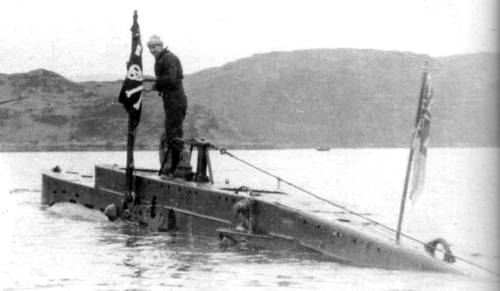
An X-Craft flying the ‘Jolly Roger’ (pirate flag) to signify a successful mission. These guys are true heroes.
Also a pioneer in this sphere were the Imperial Japanese Navy who used their sneak craft in the opening stages of the Pacific war. Such missions inherently suffer high losses and the Japanese made the mistake of using up all their trained men in the first few missions. There was a lull in development and subsequent Japanese craft were suicide subs. The Germans also joined the game late when the war turned against them and their craft too are characterized by desperation and suicidal missions.
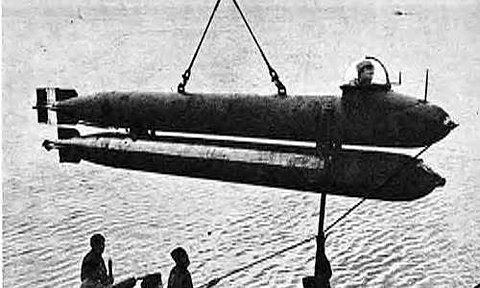
The German Neger - more risk to the driver than the enemy
The X-Craft was probably the most successful wartime midget submarine design and the term persisted after the war, and again even the Italians used it. Midget submarines are often given pennant numbers X-1… and so on.

Italian Cos.Mo.S midget submarine in service with Pakistan, but called an X-Craft
‘Chariot’ applies to any wetsub where the crew are arranged in tandem, but there is no equivalent term for craft where they sit or lay side-by-side. This arrangement took off after the war and several designs used it including several not really known of [plug: until my upcoming book is published!]. Many designers and operators feel that this arrangement was preferable so it’s a bit inconvenient that there isn’t a catchy name for it. Better known examples include the SEAL’s Mk.9 SDV (aka Mk.IX) and the Former-Yugoslavian R2.
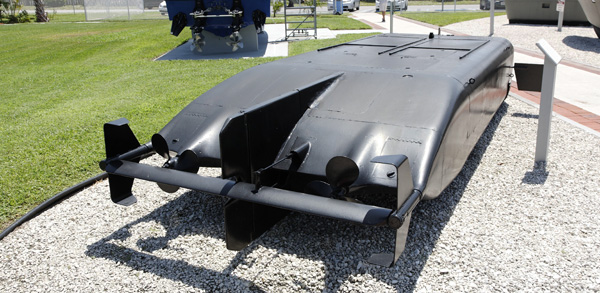
*The SDV Mk.9, probably the best known side-by-side type. *
A subset of Chariots are specifically designed to fit inside a submarine torpedo tube. Again there is no specific term for this but it is a common theme even if many types were/are secret and remain obscure today. I call these 533mm types. Examples include the Soviet Sirena series, French Havas TTV and the Swedish/British Torpedo SEAL.

The Soviet Sirena 533mm SDV
Another development that occurred shortly after the war was the development of diver tugs. These were much smaller than other types and towed the diver through the water. The innovators in this space were the French although many countries soon developed versions. Although still bought in some numbers by elite military units due to their low cost, they were generally only much use to sports divers. Such small propulsion units were often called scooters or sleds, with the latter term deriving from a means of towing a diver from a surface boat. Various people, in particular ’ (Diver Propulsion Vehicle) came into widespread use. For purely marketing reasons there is also the Diver Propulsion Device (DPD**) produced by Stidd.
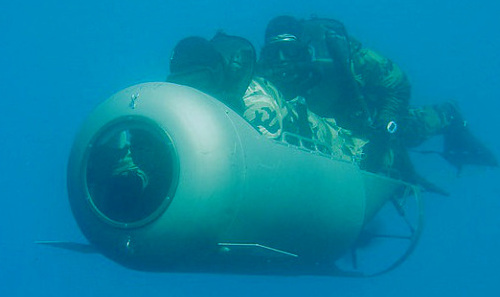
The Stidd DPD dominates the DPV market
The miniaturization of technology, particularly navigational aids, batteries and motors have recently made DPVs more viable and numerous types are on the market. In line with other military trends they are often modular and can be joined together to carry more men.
Despite DPVs the trend among the upper echelon of special forces has continued towards larger SDVs. Starting in the 1980s a range of dry SDVs which combine entered the scene, led by Italy’s Maritalia company and the Yugoslavian 911 class. A USN project, the Advanced SEAL Delivery System (ASDS), was a failure but the trend continues. At the same time regular wet SDVs continue to be developed.
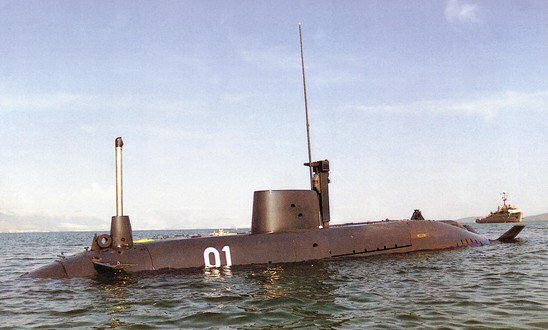
Yugoslav 911-Class dry-SDV
SDVs need to be carried by a mother submarine or boat within range of their target so another category is the semi-submersibles and submersible boats. These are essentially boats which travel most of the mission on the surface and then submerge at the final advance to avoid detection. In general they are larger than other SDVs and carry more men. There were early examples in WW2 and even earlier, but they really took off after the British SubSkimmer was developed. Today they are a growing sector of the market including the semi-submersible SEALION project and the fully-submersible Swedish SEAL Carrier.
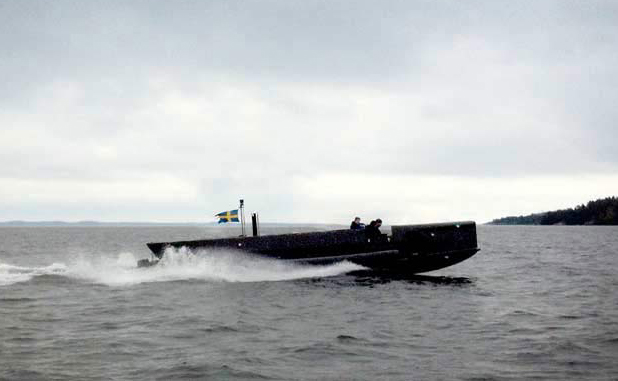
SEAL Carrier
And that’s about all you need to know to sort your SDVs from your SPUs. Thanks for reading.
